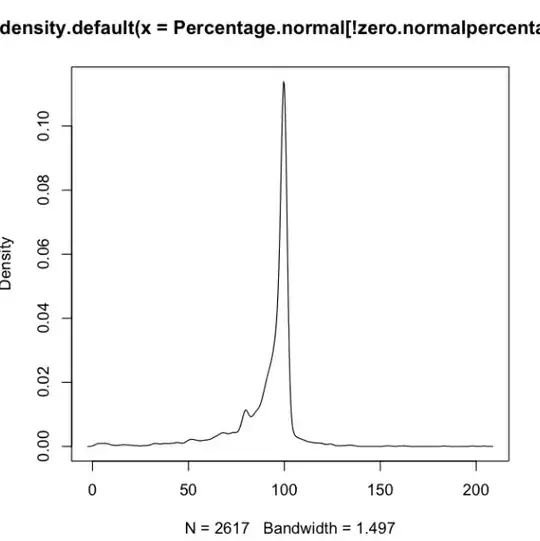I have a set of data with summary as below:

The data are non-normal and transformations did not obtain normality.
Given the data are continuous I have narrowed the range of distribution down to 'Cauchy','Weibull','Gamma','f','Laplace'.
Below is the density plot for the data:

How do I determine the right distribution for the data?